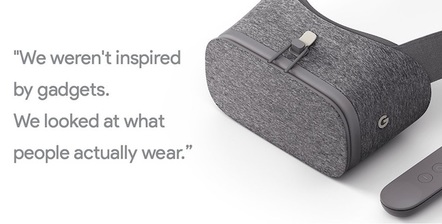This article is more than 1 year old
Google-free Android kit tipped to sell buckets
China, you see, has its own chocolate factories
Some optimists are betting on Google own-brand devices to save the smartwatch. Others are betting that new generations of Google-free Android-based hardware will do the same thing. And one of the latter is IDC.
IDC has predicted the smartwatch category will return to growth in the next few years. How so? IDC points out that China is not dependent on Google services, and it's an untapped market.
"We anticipate Android-based watches to be Wear OS's closest competitor due to the high amount of customization available to vendors and the lack of Google services in China," said IDC's research director for wearables, Ramon T Llamas.
IDC's optimism also comes from hopes for adding cellular connectivity to smartwatches and integration with IoT.
But without any killer features, the platform war may still be wide open – encouraging the Chinese to create AOSP-based Android wearables, Samsung with its Tizen and initiatives such as Asteroid, an open-source Linux for wearables.
A Google-free Android is not unusual in China, and efforts are under way to decouple the OS from Google, such as this one.
If Google's strategy can be categorised as "find something we can stuff Google Assistant into, then cover it with grey cloth", then expect to see a wearable
The smartwatch category has been in the doldrums since the deafening hype of 2014 and 2015, when Google launched the first iteration of its Android Wear (now Wear OS) platform, and then Apple introduced the Watch. Both fell flat. As we argued recently, the introduction of waterproofing in the Apple Watch 2 (2016) may have saved the category – Apple has experienced good growth since then.
Google has been tipped to revive its perpetually fitful and misfiring consumer electronics efforts with a Google-branded Wear OS Watch. If Google's strategy can be categorised as "find something we can stuff Google Assistant into, then cover it with grey cloth", then expect to see a wearable.
Google is rumoured to be working on three own-brand watches. Qualcomm has finally released new silicon for watches – the first for years.
IDC has guessed watches will account for 44.6 per cent of wearable shipments by volume by the end of 2022, around 89.1 million units. Apple is tipped to snag a growing (17.3 per cent) share, while Google-free Android (8.7 per cent) takes almost as much as Google's own Wear OS (9.8 per cent).
Others should account for 8.8 per cent. Wristbands (like fitness trackers) are predicted to shift 45.9 million units in 2022 and "basic watches" 39.3 million. ®

